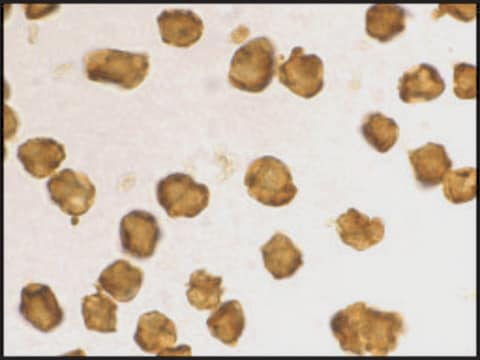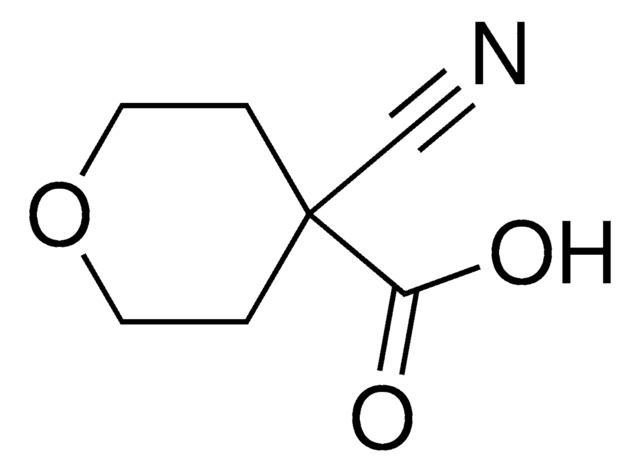HPA024759
Anti-SARM1 antibody produced in rabbit
Prestige Antibodies® Powered by Atlas Antibodies, affinity isolated antibody, buffered aqueous glycerol solution, Ab2
别名:
Anti-Sterile alpha and Armadillo repeat protein, Anti-Sterile alpha and TIR motif-containing protein 1, Anti-Tir-1 homolog
登录查看公司和协议定价
所有图片(5)
About This Item
分類程式碼代碼:
12352203
人類蛋白質圖譜編號:
推荐产品
生物源
rabbit
共軛
unconjugated
抗體表格
affinity isolated antibody
抗體產品種類
primary antibodies
無性繁殖
polyclonal
產品線
Prestige Antibodies® Powered by Atlas Antibodies
形狀
buffered aqueous glycerol solution
物種活性
human
技術
immunofluorescence: 0.25-2 μg/mL
immunohistochemistry: 1:20-1:50
免疫原序列
LATNKEVEREVERSGTLALVEPLVASLDPGRFARCLVDASDTSQGRGPDDLQRLVPLLDSNRLEAQCIGAFYLCAEAAIKSLQGKTKVFS
UniProt登錄號
運輸包裝
wet ice
儲存溫度
−20°C
目標翻譯後修改
unmodified
基因資訊
human ... SARM1(23098)
一般說明
The gene SARM1 (sterile α and TIR motif containing 1) is mapped to human chromosome 17q11. It is mainly expressed in neurons. The encoded protein belongs to the MyD88 (myeloid differentiation primary response gene 88) family of adaptor proteins. The protein contains a armadillo repeat region, SAM (sterile α motif) domains and a TIR (toll-interleukin receptor) domain. It localizes in the mitochondria as well as nucleus.
免疫原
Sterile alpha and TIR motif-containing protein 1 recombinant protein epitope signature tag (PrEST)
應用
All Prestige Antibodies Powered by Atlas Antibodies are developed and validated by the Human Protein Atlas (HPA) project and as a result, are supported by the most extensive characterization in the industry.
The Human Protein Atlas project can be subdivided into three efforts: Human Tissue Atlas, Cancer Atlas, and Human Cell Atlas. The antibodies that have been generated in support of the Tissue and Cancer Atlas projects have been tested by immunohistochemistry against hundreds of normal and disease tissues and through the recent efforts of the Human Cell Atlas project, many have been characterized by immunofluorescence to map the human proteome not only at the tissue level but now at the subcellular level. These images and the collection of this vast data set can be viewed on the Human Protein Atlas (HPA) site by clicking on the Image Gallery link. We also provide Prestige Antibodies® protocols and other useful information.
The Human Protein Atlas project can be subdivided into three efforts: Human Tissue Atlas, Cancer Atlas, and Human Cell Atlas. The antibodies that have been generated in support of the Tissue and Cancer Atlas projects have been tested by immunohistochemistry against hundreds of normal and disease tissues and through the recent efforts of the Human Cell Atlas project, many have been characterized by immunofluorescence to map the human proteome not only at the tissue level but now at the subcellular level. These images and the collection of this vast data set can be viewed on the Human Protein Atlas (HPA) site by clicking on the Image Gallery link. We also provide Prestige Antibodies® protocols and other useful information.
生化/生理作用
SARM1 (sterile α and TIR motif containing 1) is a TIR (toll-interleukin receptor) adaptor protein. It plays a crucial role in the immune system and TLR (toll like receptor) signaling. It interacts with PINK1 (PTEN-induced putative kinase 1) and is involved in the stabilization of PINK1 on depolarized mitochondria. During inflammation-mediated apoptosis, the protein is involved in the stabilization of nuclear lamins. SARM1 is also associated with Wallerian degeneration.
特點和優勢
Prestige Antibodies® are highly characterized and extensively validated antibodies with the added benefit of all available characterization data for each target being accessible via the Human Protein Atlas portal linked just below the product name at the top of this page. The uniqueness and low cross-reactivity of the Prestige Antibodies® to other proteins are due to a thorough selection of antigen regions, affinity purification, and stringent selection. Prestige antigen controls are available for every corresponding Prestige Antibody and can be found in the linkage section.
Every Prestige Antibody is tested in the following ways:
Every Prestige Antibody is tested in the following ways:
- IHC tissue array of 44 normal human tissues and 20 of the most common cancer type tissues.
- Protein array of 364 human recombinant protein fragments.
聯結
Corresponding Antigen APREST75516
外觀
Solution in phosphate-buffered saline, pH 7.2, containing 40% glycerol and 0.02% sodium azide
法律資訊
Prestige Antibodies is a registered trademark of Merck KGaA, Darmstadt, Germany
免責聲明
Unless otherwise stated in our catalog or other company documentation accompanying the product(s), our products are intended for research use only and are not to be used for any other purpose, which includes but is not limited to, unauthorized commercial uses, in vitro diagnostic uses, ex vivo or in vivo therapeutic uses or any type of consumption or application to humans or animals.
未找到合适的产品?
试试我们的产品选型工具.
儲存類別代碼
10 - Combustible liquids
水污染物質分類(WGK)
WGK 1
閃點(°F)
Not applicable
閃點(°C)
Not applicable
Xiang Zhou et al.
Developmental and comparative immunology, 39(1-2), 117-126 (2012-03-01)
Toll-like receptors (TLRs) are important pattern-recognition receptors (PRRs) that trigger innate immune response and mediate acquired immunity. Evidence has shown that SARM1 (sterile-α and TIR motif containing protein 1) is one of five TIR domain-containing adaptor proteins involved in TLRs
Laura Conforti et al.
Nature reviews. Neuroscience, 15(6), 394-409 (2014-05-21)
Axon degeneration is a prominent early feature of most neurodegenerative disorders and can also be induced directly by nerve injury in a process known as Wallerian degeneration. The discovery of genetic mutations that delay Wallerian degeneration has provided insight into
Chad R Sethman et al.
PloS one, 8(7), e70994-e70994 (2013-08-08)
Sterile alpha and armadillo-motif containing protein (SARM), a highly conserved and structurally unique member of the MyD88 family of Toll-like receptor adaptors, plays an important role in innate immunity signaling and apoptosis. Its exact mechanism of intracellular action remains unclear.
Hitoshi Murata et al.
Molecular biology of the cell, 24(18), 2772-2784 (2013-07-26)
Mutations in PTEN-induced putative kinase 1 (PINK1) or parkin cause autosomal recessive forms of Parkinson's disease. Recent work suggests that loss of mitochondrial membrane potential stabilizes PINK1 and that accumulated PINK1 recruits parkin from the cytoplasm to mitochondria for elimination
我们的科学家团队拥有各种研究领域经验,包括生命科学、材料科学、化学合成、色谱、分析及许多其他领域.
联系客户支持








